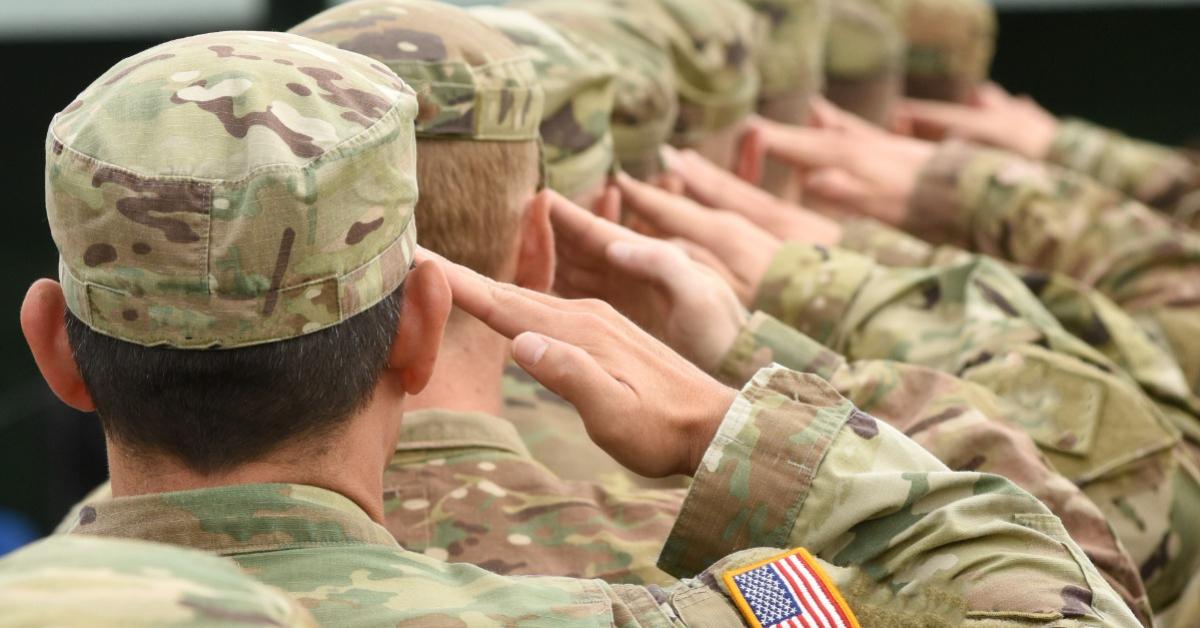
United States military conscription, or the draft, ended on January 27, 1973, with the winding down of the Vietnam War. The draft law was due to expire at the end of June 1971. But US President Richard Nixon decided it needed to continue and asked Congress to approve a two-year extension. In March 1973, 1974, and 1975, the Selective Service assigned draft priority numbers for all men born in 1954, 1955, and 1956, in case the draft was extended—but it never was.
Nixon thought ending the draft could be an effective political weapon against the burgeoning antiwar movement. In his 1968 presidential campaign, he had promised to end the draft. During his time out of office, he had become interested in the prospect of an all-volunteer force, being influenced by Martin Anderson, a professor at Columbia University.
While there was no opposition to an all-volunteer military in the Defense Department or Congress, Nixon took no immediate action toward ending the draft in the early years of his presidency. Rather, the president named a commission headed by Thomas Gates Jr., a former secretary of defense in the Eisenhower administration, to examine the issue.
Gates initially opposed the all-volunteer army idea but changed his mind as the fifteen-member panel did its work. The commission issued its report in February 1970. It found adequate military strength could be maintained without conscription.
US Conscription History
Conscription as a noun is defined at Dictionary.com as the “compulsory enrollment of persons for military or naval service; draft.” The origins of military conscription date back thousands of years to ancient Mesopotamia, but the first modern draft occurred during the French Revolution in the 1790s. The French universal draft included all young men regardless of social class. When the French needed a bigger army in 1793, the government decreed a leveé en masse, which conscripted all unmarried, able-bodied men between the ages of eighteen and twenty-five into military service.
Congress authorized the first comprehensive Continental Army draft in a February 1778 recruiting act. Covering eleven of the thirteen states (excepting South Carolina and Georgia), the legislation called for the enactment of a nine-month levy, or an effective alternative, to fill recruiting quotas. Maryland, Massachusetts, New Jersey, New York, and North Carolina instituted a levy, and as a result, they garnered substantial numbers of men for the 1778–79 military campaigns.
The US instituted conscription during the Civil War, which led to a series of bloody draft riots. As the war entered its third season, Congress—in need of more manpower for the Union army—passed the Civil War Military Draft Act of 1863.
The act called for the registration of all males between the ages of twenty and forty-five, yet the obligation fell mostly on the poor. Wealthier men could afford to hire a substitute to take their place in the draft or pay $300 for a draft exemption—an enormous sum of money at the time. This controversial provision sparked civil unrest and draft riots.
The most destructive were the New York draft riots, which spanned several days in July 1863. At least a hundred people died in the New York riots. Many of the rioters were poor Irish immigrants. New York’s African Americans became the scapegoats for long-standing grievances, including wartime inflation, competition for jobs, and racial prejudice among working-class people.
US president Woodrow Wilson signed the Selective Services Act on May 18, 1917, after the US entry into World War I. The US had a standing army of just over a hundred thousand at the time.
The initial act required all men between the ages of twenty-one and thirty to register with the newly created Selective Service System. By the end of World War I in November 1918, roughly twenty-four million men had registered, and 2.8 million were drafted into the armed forces. The draft was dissolved after World War I.
In September 1940, Congress passed the Burke-Wadsworth Act, which imposed the first peacetime draft in the history of the US. The registration of men between the ages of twenty-one and thirty-six began one month later as Secretary of War Henry L. Stimson—a key player in moving the administration of President Franklin D. Roosevelt away from a foreign policy of neutrality—began drawing draft numbers out of a big glass bowl. The draft numbers were handed to the president, who read them aloud for public announcement.
This draft, between November 1940 and October 1946, registered thirty-four million men, and over ten million Americans served in the military. After the US entered World War II, the draft expanded to include men aged eighteen to thirty-seven. Blacks, initially excluded from the draft, were conscripted into the armed forces starting in 1943. “Conscientious objector” status was granted to those who could demonstrate “sincerity of belief in religious teachings combined with a profound moral aversion to war.”
The draft was again readopted in 1948 and continued to exist until it was officially halted on July 1, 1973. The draft was in place during the Korean War from 1950 to 1953. Resistance to the Selective Service draft reached a historic peak during the Vietnam War. Some men evaded the draft by failing to register with the Selective Service System or by fleeing the country. According to Canadian immigration statistics, as many as thirty thousand draft dodgers may have left the US for Canada during the Vietnam War.
Draft evasion carried steep fines and the possibility of jail time. Nearly 210,000 men were charged with draft evasion, including boxer Muhammad Ali, whose conviction was later overturned by the US Supreme Court.
Postconscription
The US volunteer military service began on July 1, 1973, and continues to today. No requirement to resurrect the draft has garnered substantive legislative or public support thus far, although President Jimmy Carter reinstated draft registration in response to the invasion of Afghanistan by the Soviet Union.
The number of US personnel in uniform (US Air Force, Army, Marines, and Navy) from 1973 to 2014 shows that the total US military size was 2.16 million in 1974, 2.15 million in 1985, 1.43 million in 2003 (the year of the Iraq invasion), and 1.35 million in 2014. The US military’s size has remained roughly constant at 1.39 million from 2014 to 2022. The army is the biggest service branch, but air force personnel size has dropped by about half since 1974. Long-term trend lines show a smaller US military in terms of personnel. Coast guard and merchant marine numbers are not included here.
A volunteer military works by allowing eligible individuals the freedom to choose this way of life. The policymakers in Washington, DC, seem to be caught in the past where US military personnel seem to serve at their beck and call for consistently poorly thought-out military endeavors, interventions, or missions.
The list of known nations receiving US military intervention has too many places to name, including the numerous unknown countries impacted by covert missions. This makes one ponder if the real problem is the civilian and multistar ranks of military policymakers for whom the thought of not having an enemy to fight seems inconceivable. Ending conscription might have ended the coercive expansion of armed forces personnel, but nothing seems to end Washington’s lust for even more military intervention.





